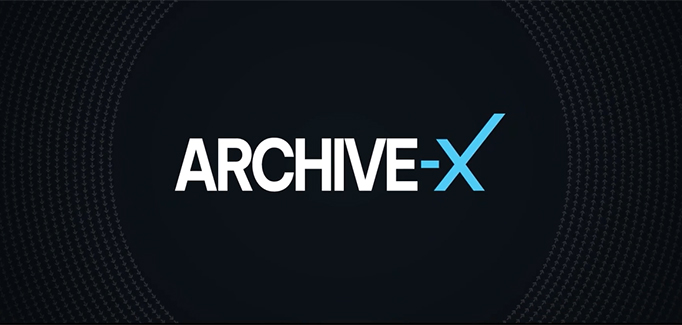Next Generation Enterprise Information Archiving:
How Can Your Firm Benefit?
March 6th, 2024

The explosion in new communication modalities and collaboration tools, along with evolving regulations, are making regulatory record-keeping and compliance more complex and challenging by the day. In this interview, NICE Actimize Product Manager Rajeev Hegde weighs in on the challenges financial services firms are facing with respect to archiving growing volumes and types of communications data, and new solutions and approaches that can reduce compliance costs, complexities, and risks.
What are some of the trends you are seeing that are making regulatory record-keeping more complex today?
Rajeev Hegde: The biggest trend has to do with the evolving global regulatory climate. Firms are concerned about regulatory record-keeping because of regulations. There are diverse regulations cropping up in every corner of the world – coming from regulatory bodies such as the SEC, FINRA, the HKMA in Hong Kong, and the FCA in EMEA. These important regulations are why we need systems to archive regulated employee communications in the first place.
In addition to this, regulators are conducting more audits, and increasingly putting firms under a magnifying glass. When regulators uncover compliance breaches, they are imposing massive fines. Over the last several years, the SEC has imposed fines in excess of two billion dollars in the US.
At the same time, with the launch of work from home environments, especially during and after COVID hit, we’ve seen the number of communication modalities that regulated employees use increase multifold. It’s not unusual for regulated employees to communicate through platforms like Microsoft Teams, WhatsApp, Webex and Zoom.
When questions come up from inquiring regulators, firms need to demonstrate that communications are captured and archived in a manner that makes it easy to have a conversation with the regulator. That means being able to reconstruct and tie together a sequence of events, regardless of the way the employee chose to communicate. Perhaps the communication started as an email, then moved to WhatsApp. You need to be able to piece all of this together and present it to the regulator.
Many firms archive their communications data in silos. Why is this a problem today?
Rajeev Hegde: The data silos that we see are really a natural outgrowth of expanding communication modalities. As new communication platforms emerged, the resulting communications were stored in different places. For example, emails might be stored in Outlook. Zoom communications might be stored in another location, and so on for WhatsApp and other communications. This progression of adding new communication technologies has led to a proliferation of different capture and archiving solutions.
To understand why this is a problem, we need to go back to why we capture and archive this data in the first place. When the regulators come knocking on your door, you need to be able to answer their questions, and this often requires connecting data points across different systems. Today, that can be difficult, because you might have to go into system A to find all of the emails, and system B to find the mobile communications.
To complicate matters further, the way you search for the records may be different. You’d search by email address in one system and then by phone number to find the voice calls in another system. Furthermore, without accurate transcription there’s no way to even do a content-based search on a voice call. So it can take a very long time to find and piece together all of the different data points. This hinders the main goal of the system – ensuring compliance and answering regulators.
The other challenge with having different archive systems is that you need to train your users on all of the different systems. Also, as new regulated employees are added, you need to make sure your firm is capturing their communications across all of these systems. So now every time you add an employee, you need to update the list of monitored individuals in every single system. And if you need to implement legal holds for a specific regulated employee’s communications for a certain retention period, you may need to set those up in multiple systems as well.
Why is it advantageous for firms to have one platform for regulatory record-keeping? And how can they achieve this today?
Rajeev Hegde: Having one platform for regulatory record-keeping addresses these challenges. For example, ARCHIVE-X, NICE Actimize’s next generation information archiving solution, makes it much easier to tie together communications data from different modalities because all communications data is now archived in one place. This includes unified communications, mobile and other voice communications (which can be automatically transcribed), and eComms, for example, email, chat, and social media.
Because ARCHIVE-X also integrates with a firm’s HR systems, it can associate many different identifiers of a regulated employee (email addresses, phone numbers, Microsoft Teams chat handle, and so on) with one unique, normalized identifier for that person.
Because of the seamless integration with the HR system, it’s also easier to ensure new employees communications are always captured and archived when these new employees come on board.
This integration, coupled with the fact that all communication data is now archived in one place, simplifies eDiscovery too. A compliance officer can perform a seamless universal search across all communication types, without having to key in unique search criteria, or search in various places. This makes it much easier to find and connect communications belonging to one person, irrespective of which communication channels the regulated employee used. With the addition of an ActOne dashboard, a compliance officer is even able to see all of the relevant communications presented on a timeline.
ARCHIVE-X also offers optional built in transcription, which can separate unique speakers (for example on a Teams call) and enable you to do content-based searches on audio. Keep in mind not all content-based searches are equal. With ARCHIVE-X, you can search by key words but you can also do content-based searches on synonyms (without having to key them in). You can even apply AI, and look for all emails of a certain sentiment (e.g. happy emails), or perform an entity-based search of the archive to find all communications where a particular person was talking about a company acquiring another company (without even specifying the company’s name). ARCHIVE-X is smart enough to extract the entities.
You can also export the results of any searches without having to pay additional fees, which is something competitive systems may not offer. And you can manage retention and perform legal holds for all archived communication records, through one seamless interface, which minimizes the risk of missing something and being fined.
When the regulator comes in for a meeting, it’s very important to ensure that meeting goes as smoothly as possible. The fact that everything is stored in one system can enhance a regulator’s confidence in you. More systems equates to more opportunities for the regulator to find gaps or errors. Now, instead of familiarizing the regulator with ten systems (or more), you only need to demonstrate one. You can also produce reports out of one dedicated system to prove compliance.
What is the advantage of moving archiving to the cloud, compared to the way firms manage it today?
Rajeev Hegde: Typically, when firms are storing communications data in silos, it’s being stored in a combination of on premise and cloud solutions. This makes it difficult to enforce data security and consistency. You might have to follow a certain set of procedures to ensure your data is safe in one cloud archiving solution. But then monitor another on premise storage location to make sure that data is secure. So data consistency becomes very difficult to achieve and maintain.
Maintaining data in different places and formats takes time and resources away from the firm’s core business. As communication modalities become more varied and technologically advanced, they require in-house resources with expertise in voice, video, email, Teams, Zoom, chat, and more, to manage. You may be storing data on premise for one communications vendor and storing it in the cloud for another. Then there are different database formats, for example Oracle, SQL, and more, that all require dedicated expertise.
It is far more advantageous and simple to consolidate all of your communications data in a single cloud archive solution, managed by one trusted vendor, with one set of consistently applied policies to ensure your data is secure. With the volume of emails, voice calls, video calls and other communications growing fast, the cloud also offers unprecedented cost savings and scalability.
Are there other considerations firms should keep in mind when looking for an archive solution for their communications data?
Rajeev Hegde: When you talk about archiving communications data for regulated employees, it is really about storing data today that you might need tomorrow. So when you are considering a cloud archive provider, you need to be confident that whoever is managing this data is financially viable, will not cut corners on security, and has a strong history of cloud deployment experience.
As for security, you want to make sure that you choose a cloud solution where data is encrypted in transit, and encrypted at rest. And you want to know the data is stored in WORM-compliant storage. You also want to make sure there is redundancy built into the cloud solution, so in the event a disaster occurs at one cloud storage location, there will always be a duplicate copy of your data at another secure site.
Check to make sure there will be no red tape when it comes to downloading of data for eDiscovery. Some archiving vendors will quote a low price for archiving your data in the cloud, but then charge surprise fees for downloading data when you actually need it, which can deter you from using the solution for the very reason you bought it in the first place – searching for and providing information and answers to regulators. These surprise fees can actually delay or add to the time it takes to get answers to regulators.
To extract maximum value from your data, you will also want to look for a solution that allows your firm to expand beyond archiving to push data to other downstream surveillance and business applications. For example, in the future you might want to expand into analytics and AI, or add alerting to automatically detect suspicious regulated employee communications. You may even want to combine communication, trade, market or behavioral data for holistic surveillance.
If you have any reservations or concerns about a particular cloud archiving provider’s capabilities, always ask for a demonstration. Being able to see how the solution works firsthand should clear up any questions and make the decision easier.
- ARCHIVE-X Brochure
- ARCHIVE-X Video
- Compliancentral Brochure




